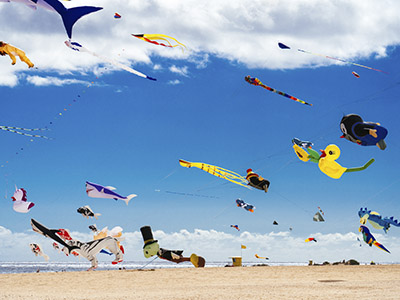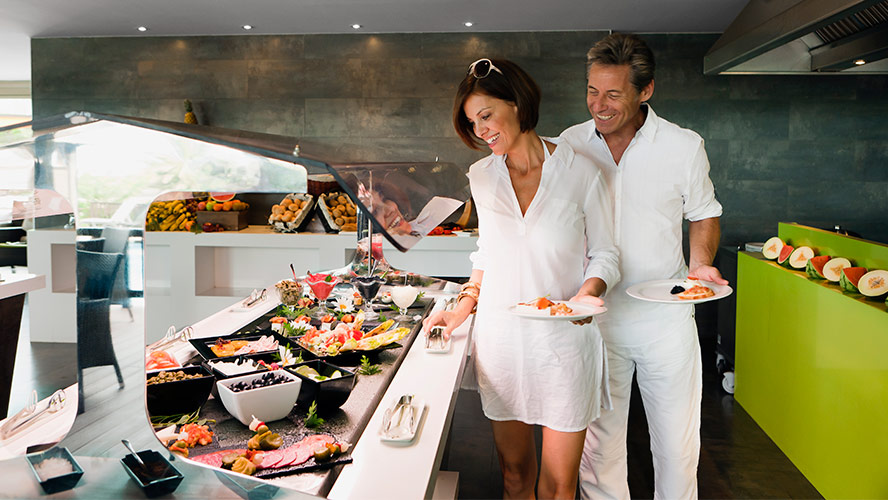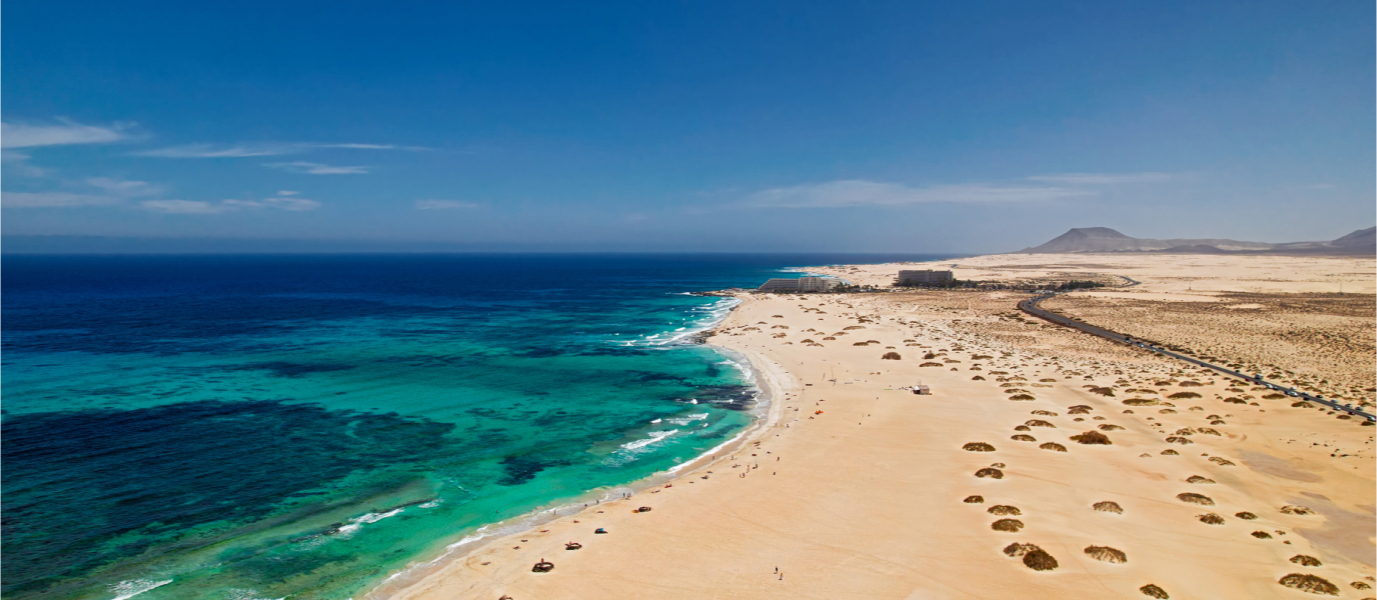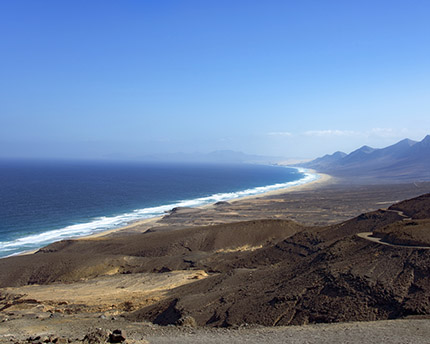Fuerteventura entices you to come and enjoy its coastline. The oldest of the Canary Islands (geologically speaking) has around 150 kilometres of shores with typical volcanic and black pebble beaches, and fine, white sand beaches too. El Cotillo, a small fishing village in the north-west of the island, is home to La Concha beach (not to be confused with the beach of the same name on the Island of Lobos), an idyllic spot considered by many to be the best beach on the island. In addition, it combines the charm of unspoilt coves with the ease of visiting a well-serviced beach. Join us below on a virtual tour around La Concha beach to discover all its nooks and crannies.
La Concha, a multi-coloured beach in Fuerteventura
Over the past few years, La Concha beach has sporadically flown the prized Blue Flag above its shores, an award given to beaches and ports that comply with certain requirements concerning information, environmental management, water quality, safety and services.
The beach is really easy to reach: from the village of El Cotillo follow the directions on a sign that points you towards Los Lagos, Playas, Faro; after 700 metres another turning to the left leads you directly to a car park right next to the beach.
La Concha beach is probably most famous for its huge range of colours: the turquoise blue ocean contrasts with fine, white sand that is dotted with chunks of black volcanic rock. La Concha isn’t usually too crowded so you can easily find a good spot to set up camp—you’ll soon notice two important factors here: the wind and the surf. La Concha is a fairly windy beach, something that locals have tried to combat by building corralitos, small arches of volcanic rock that break up the wind. In fact, some of the corralitos that are scattered along the shore are large enough for a whole family to fit inside.
Paradoxically, surf is sometimes practically non-existent here thanks to a natural horseshoe-shaped reef offshore that functions like a protective shield. This means that a huge number of marine animals live in the water so scuba-diving is very popular and highly recommended.
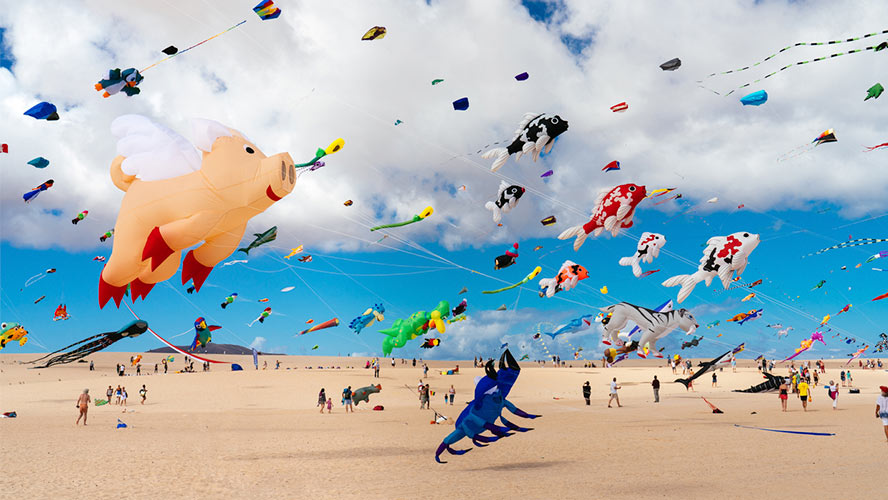
What’s more, the International Kite Festival has been held at La Concha each year since 1987. This competition sees 450 kites from different countries around the world flutter in the skies and decorate the shores of this beach in El Cotillo, adding to its charm.
Finally, make sure you don’t miss the sunset at the end of your day of relaxation and exploration: at this point on Fuerteventura’s coastline the skies turn a mysterious shade halfway between lilac and blue.
La Concha beach, all the services you need in El Cotillo
La Concha beach succeeds in retaining the beauty of an unspoilt beach but has all kinds of services for beach-goers at the same time. Wooden walkways make it easier to reach the sand for people with pushchairs or wheelchairs. There are also public toilets and showers if you want to wash off any annoying sand before leaving.
And if you fancy a bite after long hours on the beach, Bar Torino is close to the car park, a beach bar that serves dishes typical to the area, such as ‘wrinkled potatoes’ with mojo sauce or fresh grilled fish. However, if you’d prefer a table and tablecloth, Italian and Mediterranean restaurant Azzurro Chill Out is just 300 metres away and it has a full menu, a long wine list and live music.

Other El Cotillo beaches at a glance
La Concha beach, also known among locals as Playa Chica, is especially enchanting due its diminutive size. However, at 200 metres long and 60 metres wide, this does mean that people who love strolling along the seashore might be a bit disappointed. But there’s no need to worry! El Cotillo has many other beaches apart from La Concha and they can all be walked along as part of a 4-kilometre long route.
For example, Los Lagos beach is connected to La Concha to the south; this family beach is similar in appearance to La Concha but is unusual because small natural pools form among its rocks so swimming here is a real adventure.
You’ll find two other beaches in the opposite direction, to the north: El Islote and El Río. They also have similar characteristics to Los Lagos and La Concha, however, El Islote and El Río are both unspoilt and isolated without any kind of nearby services. They’re a great option if you’re interested in naturism.
And if you continue bordering the coast northwards, after 2.5 km you’ll come to El Tostón lighthouse, which was built on Punta Ballena in 1897. In 2008, the lighthouse building was converted into the Traditional Fishing Museum, a collection of original pieces that aims to reveal the historical importance of fishing on the island. In addition, the views from this spot get better and better as the sun rises and sets.




































































